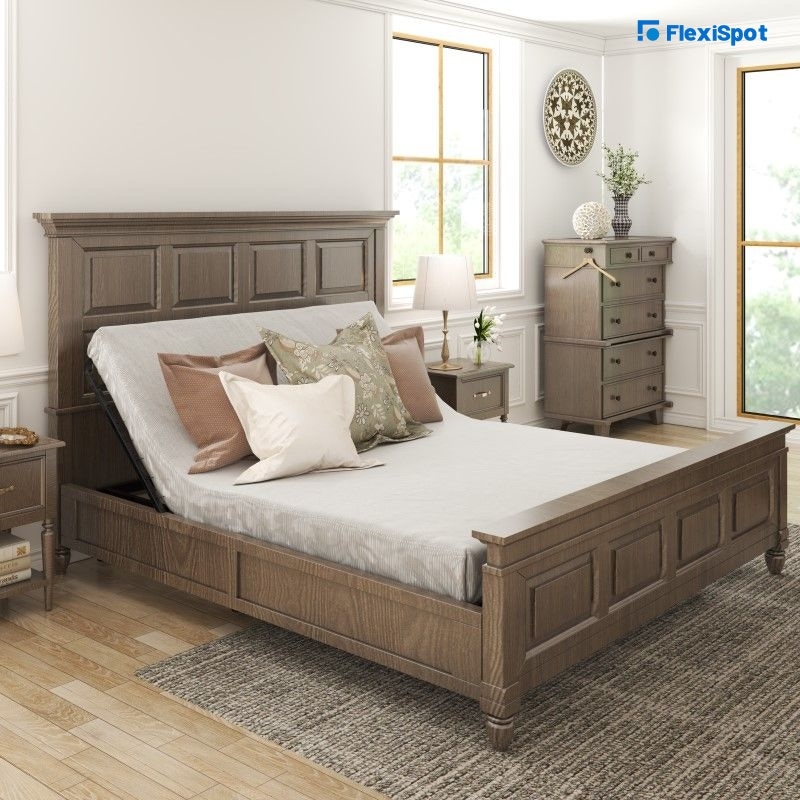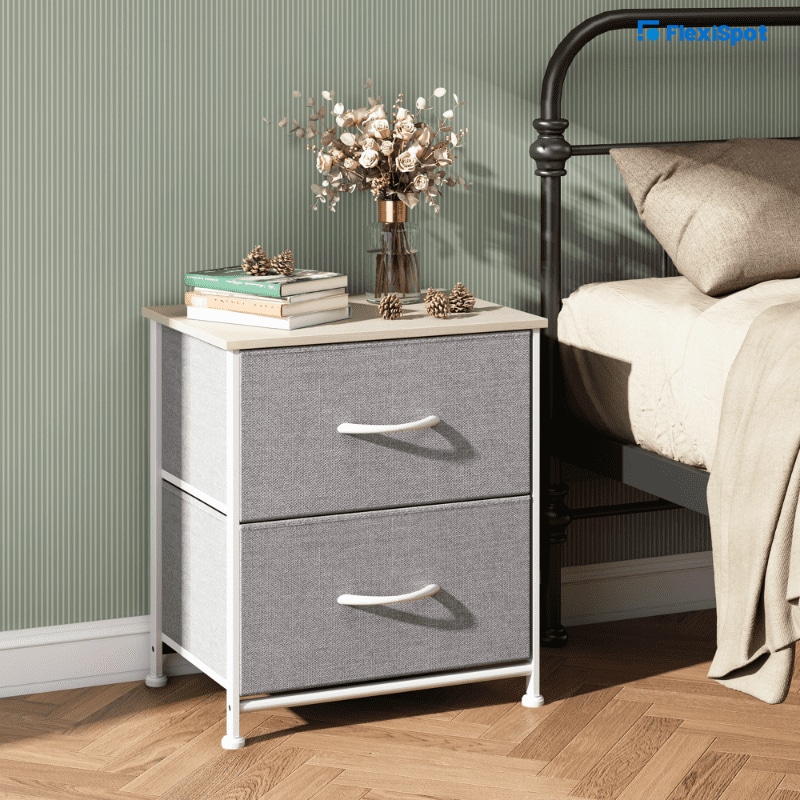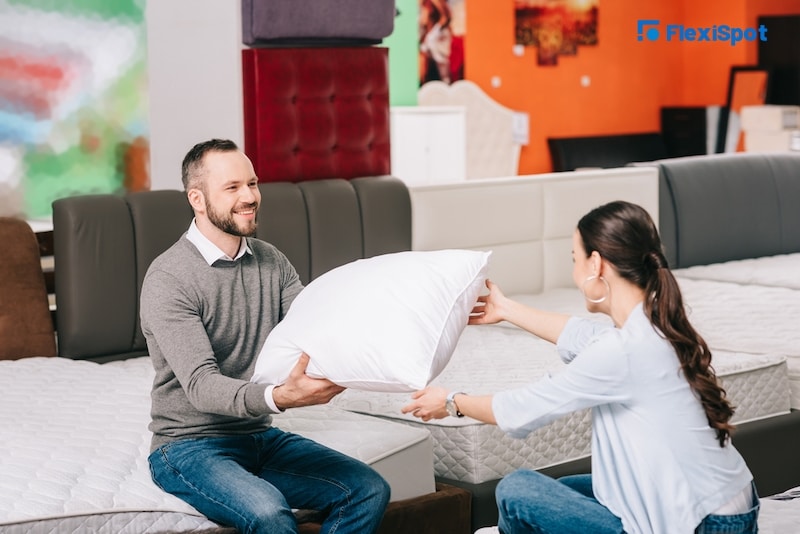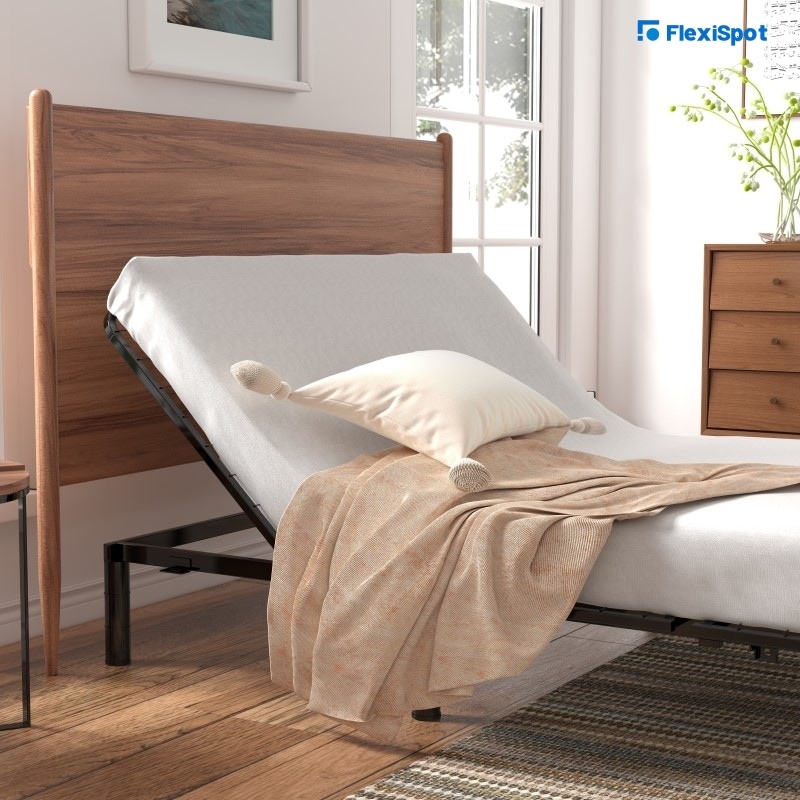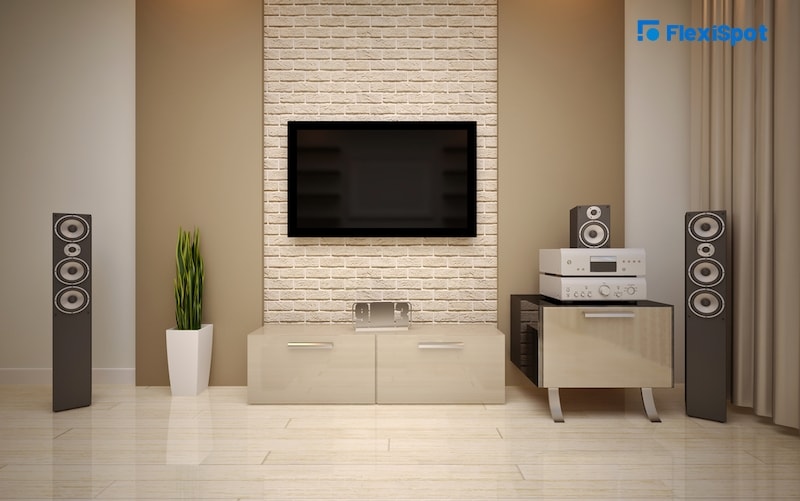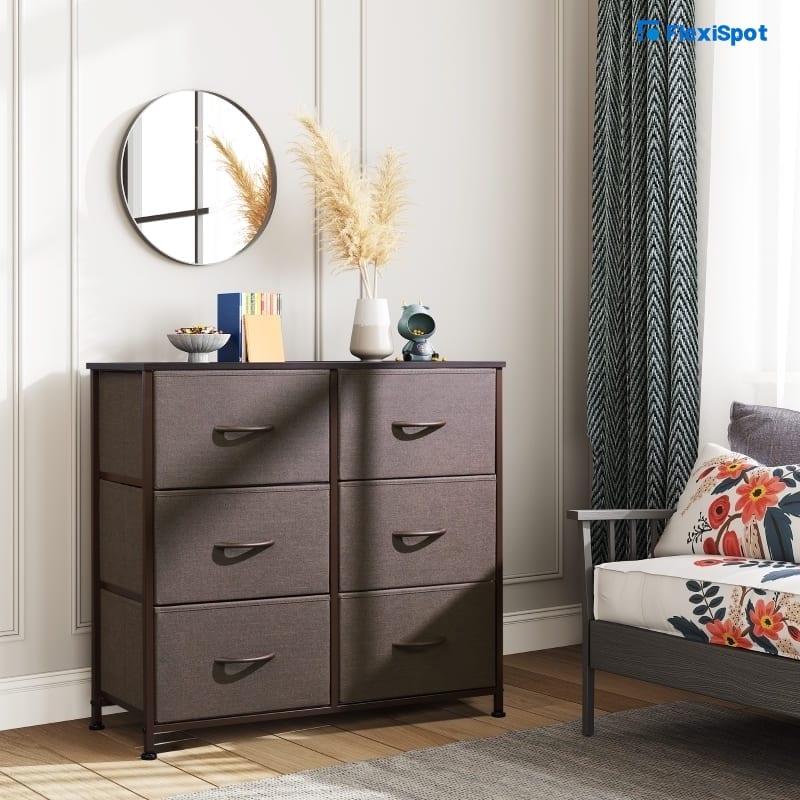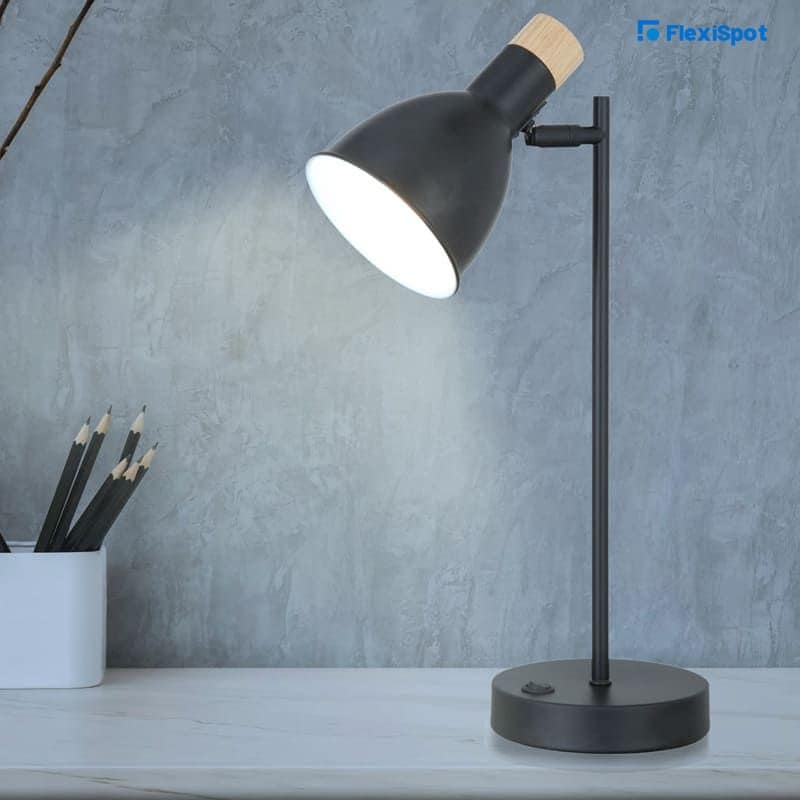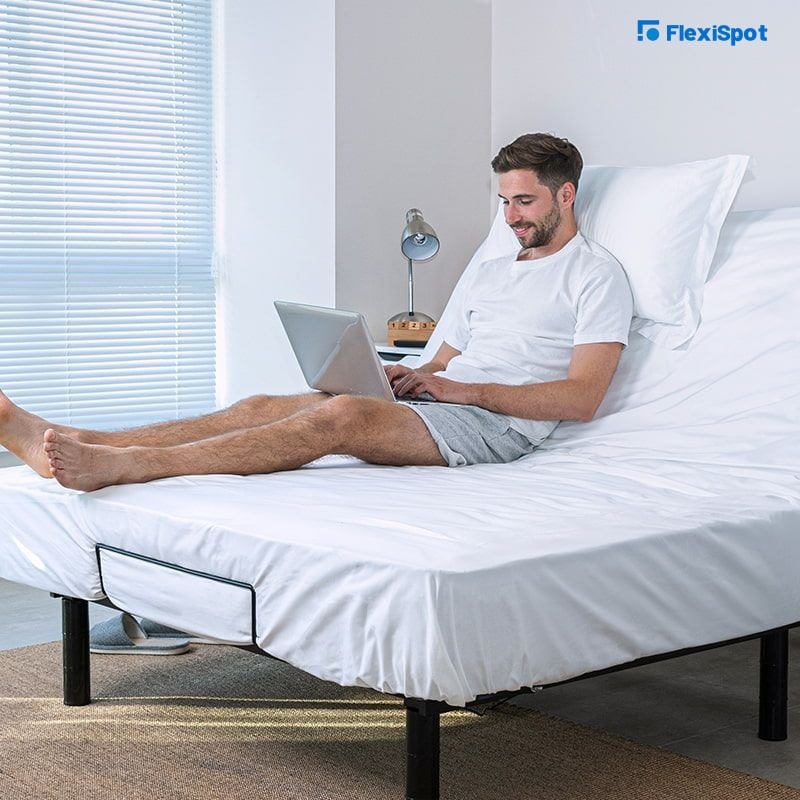We spend over 200 hours a month in our bedrooms just sleeping, which does not include the time we spend in there unwinding. Now add in the extended time we’ve been spending at home since the Coronavirus pandemic grounded us, and you’ve got an inordinate amount of time spent in the bedroom.
That aside, you and I and every other person in the world have wished at one point that they could take that Zoom meeting while snuggled up under the covers, especially on those cold, dreary days. However, medical experts have been quick to rein in those fantasies with research that shows that working from the comfort of your bed isn’t all that comforting in the long run. Not only is it bad for your posture, but it can definitely blur the line between your home and work life, therefore interrupting your sleep schedule and decreasing your productivity.
Thankfully, there’s a solution for this; bedroom ergonomics. When we talk about ergonomics, we’re referring to user-friendly approaches to design that consider both your comfort and function. Whether you are bedridden or injured, lacking in space, or simply feel like switching it up and working from your bed, ergonomics is what will help you stay healthy. In this blog post, we’ll show you how to set up your bed ergonomically.
What to Consider for an Ergonomic Bedroom Design
The way you set up your bedroom greatly influences the quality of your sleep, which in turn affects your mood, energy levels, and ultimately, your health. A good ergonomic bedroom design ensures the space is restful and is clutter-free. Here are the key factors to consider:
Bed Positioning
The bed is the most essential part of the bedroom (it’s in the name); therefore, the bed should be positioned first. For ideal placement, the bed should be placed against a solid wall and towards the middle of the room to leave space for people to move around.
If you place the bed too close to the door, then it might provoke feelings of insecurity. If you place it under the window, noises, drafts, and light from outside may lead to a fitful sleep. It’s best to place the bed opposite the door and parallel to the window.
Walk Room
Though the bed is the room's main feature, it shouldn’t overwhelm it. To enforce this, follow the golden ratio of the design. It states that your room should be 60% furniture, 30% walk room, and 10% other accessories such as a nightstand.
Make sure there’s enough room around the bed with no obstructions to allow you to access the closet and window quickly and directly.
Easy Access to Doors and Storage
Ensure nothing is blocking the door from opening properly. The same principle applies to all other cabinet doors in the room. The goal is to achieve maximum functionality by ensuring uninhibited access to all storage spaces.
Buy Furniture that Fits the Size of Your Bedroom
Who doesn’t love a good-sized bed? Unfortunately, for the sake of ergonomics, the size of your bed should be dictated by the size of your bedroom. If your bed or other furniture is too big and overwhelms the room, it defeats the purpose of trying to be ergonomic in the first place.
Minimalism goes hand in hand with ergonomics so try to get furniture that not only suits the space but can also perform double functions, such as an ottoman bed that doubles up as storage.
The best way to decide what furniture you need in your room is to figure out your purpose for it, then work backward. For smaller spaces, get taller dressers to maximize storage and minimize space. In the closet or wardrobe, position the hangers in such a way that you don’t have to bend too much or stretch to reach your items.
Get an Ergonomic Bed
An ergonomic bed is a bed that has been designed to provide the best sleeping experience possible. It comes with several built-in features that help to keep you comfortable all night long. Here are some tips to help to choose a good bed, including its accessories:
Tips on Picking a Good Mattress
Like in The Princess and the Pea, mattress comfort directly affects the quality of our sleep. A bad mattress can lead to long-lasting aches and pains. When choosing a good mattress design, consider the following:
1. Support - A good mattress is firm enough to provide extra support to the spine. It follows the spine’s natural curves in order to help the body hold a good posture as it does when standing.
2. Mattress firmness - Generally, a firm mattress is preferred, but even that has its limits. A hard mattress can result in aches at different pressure points of your body, depending on how you sleep. If you sleep on your side, then a hard mattress could be the reason your hip and shoulder ache on your dominant sleeping side.
3. Compatibility with an adjustable bed - The most ergonomic bed is an adjustable one that you can put in different positions to suit your needs. It’s essential to consider both when choosing a mattress, so you get the best bang for your buck.
4. Pillow-top - This refers to the padding on top of the mattress that provides a soft layer. Pillow-tops vary in softness and thickness. There are different options on the market depending on your budget and needs. Some even have extra features such as heating for extra comfort. Wool pillow-tops tend to be more expensive, but they are excellent for warmth when cold and cooling when it's warm. Conversely, egg crate pillow-tops tend to be cheaper but wear out quicker.
Tips on Picking a Good Pillow
A good pillow goes hand in hand with a good mattress. A good pillow should support both your neck and head. Therefore, it affects your sleep quality and protects the neck from sustained pressure. Here’s how you can pick a pillow that works for you:
1. Consider the materials - A good pillow disperses heat. A pillow that isn’t breathable traps your body heat and turns your pillow into a furnace. This is probably why you’re constantly looking for the cooler side of the pillow. Cotton, feather, or down are good breathable natural materials that effectively manage body heat.
2. Consider firmness - The common misconception is the softer the pillow, the more comfortable it is. However, this may not necessarily be true. A good pillow should be able to support your head and neck throughout the night. Therefore, softer may not always be the way to go.
3. Consider what it’ll be used for - Pillows can be used for more than resting your head on. If you have a back injury, you may need to place a pillow at the base of your spine. You can also use pillows to limit your body movement when you’re sleeping and to stop you from rolling over. If you’re a snorer, a thicker pillow can tilt your head forwards and help manage to snore.
4. Consider your sleeping position - Whether you’re a back sleeper, side sleeper, or you sleep on your stomach, you will need a pillow that alleviates pressure on the different parts of your body that hold your weight when you sleep. For instance, if you sleep on your side, you may need to place a pillow between your legs to alleviate pressure on your hip. On the same note, a small pillow under your knees will come in handy for people that sleep on their backs. Finally, if you prefer to lie on your stomach, in order to prevent pressure on your back, you might consider placing a thin pillow under your belly.
Tips on Picking a Good Headboard
A good headboard not only improves comfort but also affects the room aesthetically. Here’s how to pick one out:
Style - You can exercise a little bit of creativity here with shapes and colors that are both pleasing to you and that fit with the general theme of your room.
Support - A good headboard provides support for your pillows when you’re sleeping and holds them in place. Additionally, when you’re working from your bed, an adjustable bed frame is a better option because you can play around with the settings to fit varying needs.
Comfort - A wooden headboard may be aesthetically pleasing, but for instance, when you’re watching TV in your bedroom, you need proper back support to prevent pain. In this case, an upholstered headboard is a better option.
Position Your TV Properly
While it’s not advisable to have a TV in your bedroom, sometimes you may just want to snuggle up under the covers with a good movie. Ideally, good TV placement should be at eye level to avoid strain on the back and neck. Consider the fact that you’ll probably be lying down when watching.
Additionally, consider the mount you use because a tilt or full-motion mount allows for comfort and versatility in your viewing experience. Ensure that all the wires are placed out of view to avoid clutter and create a seamless finish.
Clever Storage
When you’re working with limited space, you have to get creative with storage. Use furniture pieces that also double up as storage. You can store luggage and seasonal clothes underneath the bed. Similarly, you can get a window seat and use the bottom of the seat for storage.
You can also add units for closed or open storage.
If storage is your priority, make sure all the furniture you get has drawers and shelves. Even go for obvious (traditional) storage pieces like a multifunctional dresser. Such pieces ensure that your room is still functional while remaining uncluttered.
Working From Your Bed
Ideally, you should avoid working from your bed because it’s not good for posture. However, there are unavoidable circumstances such as an injury that confines you to your bed, and still, the show must go on. Other times you may just feel like taking a break from your usual workspace, or you may not have enough room for a separate workspace. Either way, here’s what you should consider:
Elevated Workspace
In order to prevent aches and pains, it’s important to elevate your workspace so you can work with your screen at eye level. To do this, you need either a cushion, a bed tray, or a lap desk.
An adjustable bed tray is the best ergonomic solution because you can customize it to your height and adjust it to help you work from bed better and longer. Get one that comes with a built-in fan that helps disperse heat from your laptop to prevent overheating for maximum efficiency.
Adequate Illumination
Employ task lighting such as desk lamps or mounted lights directly above the bed or on either side of the headboard to prevent eye strain. Poor lighting results in bad posture and neck strain to maintain a good view of your screen.
On top of that, good lighting shouldn’t cause any glares or cast shadows on your workspace that would stress your eyesight.
Ergonomic Mattress and Pillow
When working from your bed, sleeping pillows may not be the best option for back support. There are several ergonomic pillows to choose from that offer better lumbar support and help you maintain a good posture. These pillows support your neck and back, which are the primary sources of pain endured working from bed.
Similarly, a good mattress designed for an adjustable bed frame is a better fit because it conforms to your settings regardless of whether you’re reading, working, or watching TV.
Adjust Your Posture
The best way to sit while working from bed is to cross your legs and place some pillows on your lower back to maintain a good posture. Sitting with your legs straight strains your hamstrings therefore you need to place a pillow under your knees for support. An adjustable bed frame is the all-in-one solution for posture problems in bed–get one and calibrate its settings to give your body its natural curvature.
Flexispot brings you a one-of-a-kind adjustable bed frame. Here are some of the reasons why you should consider getting one:
It is customizable and has head adjustment ranges starting from 0 to 60 degrees. This offers the optimal angle for reading watching TV, among other activities.
It helps relieve back pain and ease of getting up for people with such struggles, e.g., the elderly.
It helps reduce snoring, sleep apnea, and pregnancy-related sleeping problems.
It can fit in an existing bed frame and be used as a stand-alone support system.
It has a number of height options–3’’, 6’’, and 9’’.
The maximum height presents an opportunity for under the bed storage.
It is stable and durable and can support a maximum weight of 600lbs.
It has a quiet operation at less than 50dBs.
It has passed over 10,000 standard tests.
Can accommodate 2 separate sleep preferences. It has a split king option, where each user can adjust the frame to their preferred position.
Exercise Periodically
The golden rule of a sedentary lifestyle is that you must incorporate breaks hourly or so to aid in blood circulation and prevent long-term aches from sitting or standing too long.
Take a walk every now and then, or do some exercises to stretch your limbs. You can also incorporate some neck exercises to prevent kinks in your back and neck, especially if you’re working on your laptop.
Conclusion
We all know that getting a good night's sleep is crucial for our health and well-being, but what many of us don't realize is that the way we set up our bed can play a big role in how well we sleep.
Everything in your bedroom, from the furniture layout, lighting, storage down to the type of headboard you use for your bed is an opportunity for you to maximize comfort and functionality. Failure to consider these things results in fitful sleep, aches, and pains, and reduced productivity. We hope this article was insightful if you’re thinking of doing something different with your bedroom.

